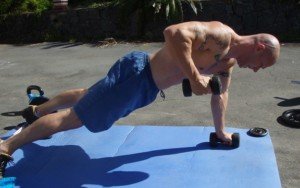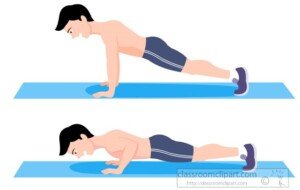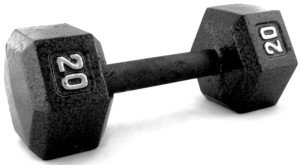
There are a number of ways to add intensity to renegade rows, but few people do this!
Yes, you can add intensity to renegade rows – many ways! I do renegade rows on my chest days. Kettlebells can be used in place of dumbbells.
The first way: Add intensity to renegade rows by adding a pushup after the dumbbell lift is performed by both arms.
This is the common way that renegade rows with a pushup are performed. The pushup comes after the dumbbell lift is done on both sides.
So lift with the right arm, set weight down, row with the left arm, set weight down, then do a pushup. Then lift with right, then with the left arm, then do a pushup. And so on.
However, why wait until after you row with both arms to do the pushup?
Add further intensity to renegade rows by doing the pushup after each single row!
Go with the right arm, pushup, then row the left arm, pushup, then right arm, pushup, then left arm, pushup, and so on.
I rarely see people doing it this way (other than myself and my clients). And when I do see people doing it this way, they always use light weights.
So to add even more intensity to renegade rows, use heavy weights, either kettlebells or dumbbells – but use dumbbells with a hexagonal shape because round-end dumbbells can create a rolling problem. Forget the 15 pound weights and go for the 25 pounders.
A well-trained man should be able to do this with 50 pound dumbbells. I’ll correct that: 70 pound dumbbells.
If you think I’m losing my mind here, if I can perform renegade rows with 50 pound dumbbells – after every unilateral row at that – then a well-trained man should be able to move 70 pound dumbbells likewise.
There are more ways to add intensity to renegade rows.
After you achieve muscle failure … just do pushups – keep doing them to failure.

So this way, you reach failure twice in the same routine:
1) Upon performing renegade + pushup, whereas the rowing motion starts falling apart and you reach muscle failure with that particular movement, and 2) You abandon the rowing portion and continue doing just the pushups until you can no longer do those, either.
Throughout all of these movements, you must concentrate hard on maintaining good form!
There are several ways to break form while doing these, such as “walking” the feet; performing incomplete or low rows (pulling the weight up closer to the hip rather than bending arm near ribs as though you are “elbowing” someone lying on top of you); allowing butt to poke up so that body is approaching a V shape; and sloppily lowering weights by allowing them to bang back to the floor rather than lowering them with control.
More ways to add intensity to renegade rows:
Place feet on an elevated surface such as a stepper platform (that’s used in step aerobics classes), or – if you’re a total animal – place feet on a stool! This is wicked!

And yet another way to add intensity to renegade rows is to do them off of one foot, either that foot on the floor or on a stool.
There is yet one more way to add intensity to renegade rows, but it comes with a warning: You risk injuring rotator cuff.
But then again, if you’re doing “upright rows” and cable crossovers, you risk injuring rotator cuff. So here goes:
Use dumbbells that are round, rather than hex. I don’t know at which point in poundage this starts becoming a problem because I’ve always used hex style.

But one day I was at a gym with only rounded dumbbells, so I proceeded to perform renegade rows with 40 pound dumbbells … and promptly knew there was a problem.
Each time I proceeded to lift, the support hand … which was on the dumbbell on the floor … began fighting against that dumbbell to prevent it from rolling rightward.
It made me think that any moment it would roll out to the side and pull my shoulder out with it.
However, when I do renegade rows, the dumbbells are in neutral position (my palms face each other).
For me, this position is highly preferable.
If dumbbells are positioned so that their ends face each other, the propensity for rolling is diminished.
For the ultimate intensity technique with renegade rows, use very heavy weights; perform the pushup after every unilateral row; and prop feet up on a stool. Vicious!
























